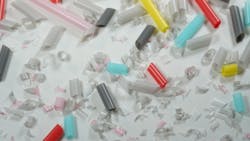World’s first standardized testing for microplastics in drinking water
With concerns mounting over the potential impacts that microplastics may have on the environment and human health, the California State Water Resources Control Board, in partnership with the Southern California Coastal Water Research Project, has developed the first standardized analytical methods in the world for the testing and reporting of microplastics in drinking water.
These methods come after a recent piece of state legislation, Senate Bill 1422, required the State Water Board to adopt a definition of microplastics and then create a standard methodology for the testing of drinking water for microplastics. The bill also required four years of testing and reporting of microplastics in drinking water, including public disclosure of those results.
The board is already investigating the presence of another major group of long-lasting chemicals, per- and polyfluoroalkyl substances (PFAS). PFAS and microplastics are similar in their diversity of characteristics and chemical compositions, their inability to break down in the environment, and their widespread use and contamination. However, unlike PFAS, microplastics occur predominantly as particles in the environment, therefore requiring distinct and new approaches to characterize and manage their contamination.
“Now that we can measure microplastics consistently from one lab to the next, we have the foundation to begin gathering data and determining the impacts,” said E. Joaquin Esquivel, chair of the State Water Board. “Having the first standardized method in the world shows the commitment California has to find out as much as possible about microplastics so we can continue to protect human health and safeguard the environment.”
Development of the new standardized methods — Raman spectroscopy and infrared spectroscopy — has been two years in the making and will, for the first time, allow environmental laboratories to conduct tests and post findings that will be comparable with other labs that are following the same protocols. Testing will initially focus on source waters — rivers, aqueducts and reservoirs that supply a large portion of the state’s drinking water.
“This really is a big step for determining whether or not microplastics are a problem for human health,” said Scott Coffin, a research scientist with the State Water Board who helped develop the new methodology. “There’s an old adage that if you can measure something, you can manage it. By having a standardized method, we can determine if we are being exposed at significant quantities that might be relevant to our health.”
To arrive at the two reliable methods, the Southern California Coastal Water Research Project collaborated with leading researchers to select potentially viable methods and instruments for testing microplastics in drinking water and then subject them to real-world testing at 22 laboratories from six countries. Months later, when the work was complete, the results were scrutinized to find strong protocols for standardize microplastics testing. These protocols are expected by the state to be adopted and used worldwide.
